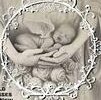When it comes to baby clothing, the options are seemingly endless. While it’s tempting to purchase every cute outfit that catches your eye, building a functional wardrobe that meets your baby’s needs and keeps them clean and cozy requires careful consideration.
Newborns grow fast, so it’s important to focus on a few basics that are essential for keeping them comfortable and safe. Onesies and rompers are great choices, since they combine a top and bottom into a single garment. They’re ideal for everyday wear, whether your baby is lounging at home or going out on a stroll.
Choose clothes that are soft to the touch and breathable, as newborns can become fussy when their skin is itchy or uncomfortable. Clothes that are too tight or made of rough materials can also interfere with your newborn’s growth and development. Opt for cotton clothes, as they’re typically softer and easier to wash than synthetic fabrics like polyester. Brushed or pima cotton are both popular options that feel luxuriously smooth and cool against your newborn’s skin.
Infant clothes should be fitted but not snug, as newborns need flexibility and freedom of movement to explore their environment. Look for flexible elastic bands around the wrists, ankles and waist to allow your baby’s natural movement.
Newborns spend 16-18 hours a day sleeping, so comfortable pajamas are essential for their health and well-being. Sleep-promoting sleepwear, such as a swaddle blanket or sleep sack, helps them settle into a restful pattern and can reduce their startle reflex. Choosing soft, lightweight pajamas that are easy to take on and off for diaper changes is another good way to make nighttime diaper changes as stress-free as possible.
Keep in mind that babies need extra layers during cold weather, as they’re more sensitive to temperature changes than adults. A cotton onesie layered with a sweater or knitted jacket is an effective way to keep your little bundle of joy warm without overheating. A hat, mittens and socks complete the winter ensemble, helping your newborn stay comfortable while adjusting to the cooler weather.
Babies require a lot of clothing, due to their frequent diaper changes and the risk of spit-up and spills. It’s a good idea to opt for quality clothing that can hold up to repeated washes and resist shrinkage, such as organic or 100% cotton. Also look for garments that are hypoallergenic and fragrance-free to avoid irritating your baby’s delicate skin.
As a new parent, you may want to consider a few specialty garments that are perfect for special occasions or activities. Swimwear, formal dresses and costumes are a few examples of items you’ll want to have on hand when your little one wants to dress up or get dressed up.
